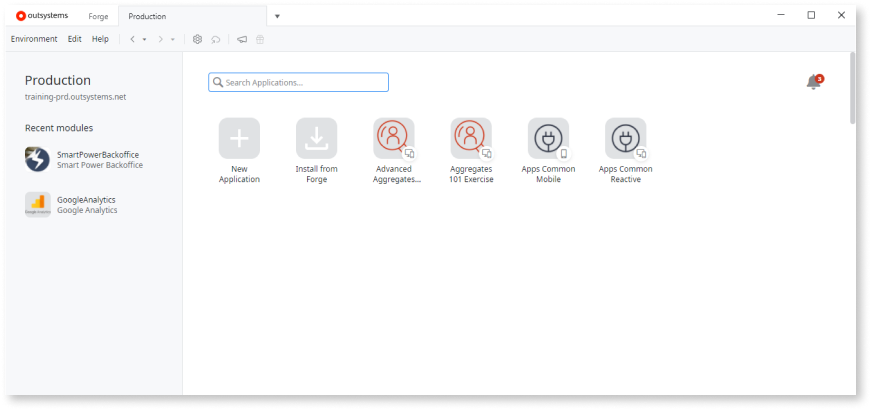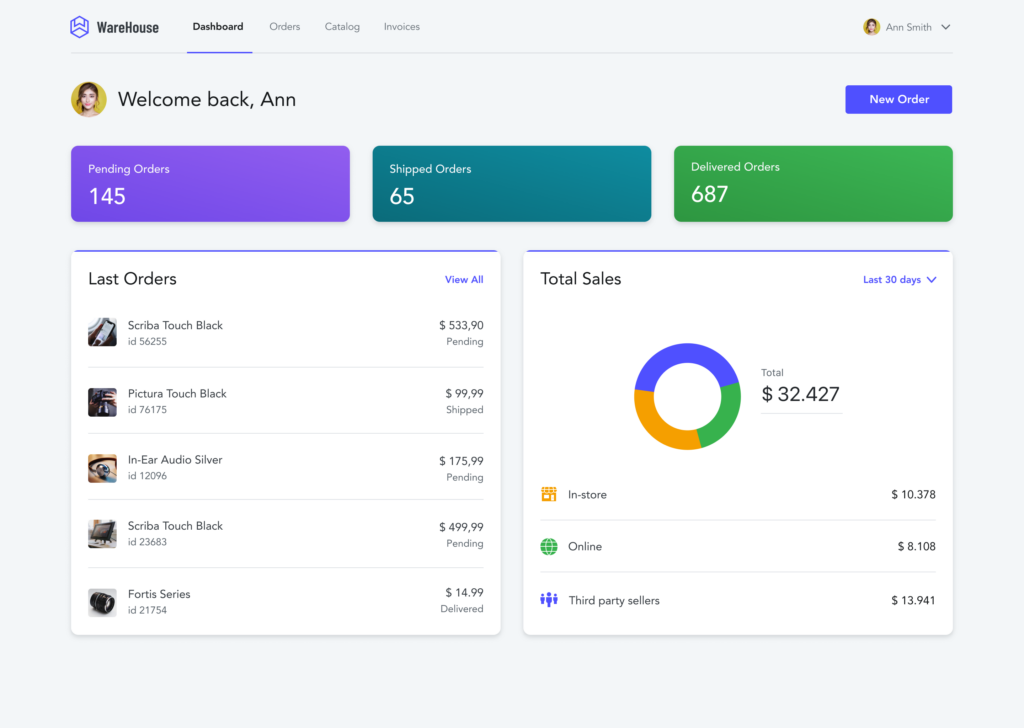With years in the low-code tech world under my belt, I've had the pleasure of working with a variety of tools and platforms. In this review, I'll share my insights on OutSystems low-code software to help you gauge if it aligns with your needs. Trust that you'll find a clear, informed perspective to aid your decision.

OutSystems Product Overview
OutSystems is a low-code platform for app development and software development designed to help you build enterprise-grade apps fast. It primarily targets developers and business users who want to speed up the development process because, for example, the time needed for backend and front-end system integration and data aggregation is amazing.
In fact, the platform simplifies complex tasks, freeing you from the intricacies of full-stack coding. Also, among its best features are visual development, single-click deployment, and cross-platform compatibility.
Pros
- Visual Development: The drag-and-drop interface means you don't have to write every line of code, speeding up the development process.
- Single-click Deployment: OutSystems enables rapid deployment, getting your application live in a fraction of the time.
- Cross-platform Compatibility: Build once, deploy anywhere - your apps will work across iOS, Android, and web browsers.
Cons
- Learning Curve: While it's easier than traditional coding, mastering OutSystems can still take some time.
- Customization Limitations: For highly specialized tasks, OutSystems might not offer the level of customization you desire.
- Resource Intensive: Larger projects may consume a lot of system resources, affecting performance.
Expert Opinion
In my years working with low-code tech, OutSystems has frequently come up as a contender. Functionality is broad and generally robust, the support is reliable, and the user interface is intuitive.
However, it can be pricier compared to some other low-code platforms, and the onboarding may not be as smooth. It excels in quick development and deployment but falls short in highly specialized customizations.
So, OutSystems could be a good fit for you if you belong to a medium to large enterprise and aim for quick development with less focus on custom elements.
OutSystems Review: The Bottom Line
As a matter of fact, what sets OutSystems apart is its focus on enterprise-level solutions without bogging down the user in complex coding tasks.
It's particularly good for teams that want to accelerate their development cycle without sacrificing quality. Moreover, its visual development environment and single-click deployment are standout features that deliver real benefits.
OutSystems Deep Dive
Product Specifications
- Visual Development Environment: Yes
- Drag-and-Drop Interface: Yes
- Pre-Built Templates: Yes
- Cross-Platform Deployment: Yes
- Single-Click Deployment: Yes
- Reusable Components: Yes
- Integration APIs: Yes
- Version Control: Yes
- Automated Testing: No
- Real-time Collaboration: Yes
- Role-Based Access: Yes
- Offline Access: Yes
- Mobile Support: Yes
- Customizable UI: Yes
- Built-in Analytics: Yes
- Data Encryption: Yes
- Scalability: Yes
- Workflow Automation: Yes
- Multi-Tenancy: Yes
- Audit Trails: Yes
- Governance: Yes
- Microservices Architecture: Yes
- Reporting Tools: Yes
- Code Export: No
- Built-in Debugging Tools: Yes
Feature Overview
- Visual Development Environment: OutSystems offers a powerful, yet intuitive, visual environment that significantly speeds up the application development process.
- Drag-and-Drop Interface: The platform's drag-and-drop interface simplifies complex tasks, making it easy for users with limited coding experience.
- Reusable Components: OutSystems provides reusable building blocks that you can incorporate into multiple projects, a true time-saver.
- Cross-Platform Deployment: The ability to create applications that work across different operating systems is a core advantage.
- Single-Click Deployment: The platform’s single-click deployment minimizes errors and speeds up the time to market.
- Integration APIs: OutSystems offers robust API support that enables it to work well with external systems and services.
- Real-Time Collaboration: Multiple team members can collaborate in real-time, fostering productivity and teamwork.
- Role-Based Access: It provides different roles and permissions, allowing for precise control over who can do what within the platform.
- Offline Access: OutSystems allows users to work offline, syncing changes when an internet connection is reestablished.
- Built-in Analytics: The platform has built-in analytics features, offering insights into user behavior and app performance.
Standout Functionality
- Reusable Components: Unlike other low-code platforms, OutSystems places a strong emphasis on reusability, which can drastically reduce future development time.
- Role-Based Access: The granularity of its role-based access is not often seen in other platforms, enabling detailed control over project involvement.
- Offline Access: The offline capabilities are often overlooked in low-code solutions, but OutSystems handles this smoothly, allowing for true mobile application resilience.
Integrations
- Native integrations include Salesforce, SAP, and various SQL databases.
- Offers an extensive API for greater custom integration.
- Various marketplace add-ons can extend the platform's capabilities, from additional widgets to pre-built connectors.
Pricing
- Personal Environment: Free but with some limitations on features and data.
- Enterprise: Pricing upon request, varies based on needs and includes all premium features.
- Enterprise plans are billed annually.
Additionally, it is important to note that each subscription package includes limitless email guidance and access to a repository of informational resources, along with online tutorials. You'll also gain access to ready-to-use integrations from the OutSystems Forge marketplace.
Ease of Use
The interface is intuitive, but users may find some of the more advanced functionalities complex at first. The onboarding process is generally smooth, although mastering the platform takes time.
Furthermore, if you’re interested in building your first mobile app or web app (web-based or not), OutSystems is your perfect development tool as it offers an Integrated Development Environment (IDE) for creating your apps.

Customer Support
Support is generally effective, with multiple channels available including webinars, live chat, and extensive documentation. Some users have reported delayed response times, particularly during off-hours, which can be frustrating.
OutSystems Use Case
Who would be a good fit for OutSystems?
OutSystems tends to shine in enterprise environments where rapid application development is a priority. The platform's avid users often include teams in financial services, healthcare, and retail industries, where time-to-market is of the essence.
Medium to large-sized teams that value collaboration will find this tool suitable, thanks to its real-time collaboration features. It's also adaptable to various team roles, from business analysts to seasoned developers, thanks to its role-based access controls. In the end, it all depends on your business needs.
Who would be a bad fit for OutSystems?
If you're running a small startup with highly specialized, custom application needs, you may find OutSystems limiting. The most disappointed users are those seeking granular customizability for unique, specialized tasks. In such cases, a traditional coding approach might serve better.
Teams that are very small may find the platform's capabilities far exceed their needs and, therefore, may not find it cost-effective.
OutSystems FAQs
What is the learning curve for OutSystems?
It's generally easier to get started with than traditional coding, but mastering the platform can take time, particularly for advanced functionalities.
Does OutSystems offer offline capabilities?
Yes, you can build applications that work offline and sync up when an internet connection is reestablished.
What types of applications can I build with OutSystems?
You can develop a wide variety of applications, from web to mobile, and even get into more complex enterprise-grade applications.
How does OutSystems handle data security?
The platform offers robust data encryption and governance features to ensure your application and data are secure.
Is real-time collaboration possible in OutSystems?
Yes, multiple team members can work on a project in real-time, enhancing productivity.
Can I export my code from OutSystems?
No, as of now, OutSystems does not offer code export functionality.
What kind of support can I expect?
Support channels include documentation, webinars, and live chat, although some users have noted delays in response times.
Are there any pre-built templates available?
Yes, OutSystems offers a range of pre-built templates that can help accelerate your development process.
OutSystems Alternatives
- Appian: If you're looking for stronger BPM (Business Process Management) capabilities, Appian offers an integrated approach that allows for complex workflow automation.
- Mendix: If you prioritize a highly intuitive, user-friendly interface, Mendix could be a better choice for you. People often praise this tool for its excellent UI/UX design options.
- Salesforce Lightning: Salesforce Lightning may offer you more seamless integration if your business already operates within the Salesforce ecosystem since it's designed to work well with other Salesforce products.
If you're still unsure which alternative listed in this OutSystems review suits you the best, check out the best low-code development platforms.
OutSystems Company Overview & History
OutSystems focuses on providing low-code development platforms to rapidly create and deploy applications. Trusted by corporations such as Toyota, Warner Bros, and Logitech, the company stands as a private entity. It's headquarters lie in Boston, Massachusetts, and has Paulo Rosado serving as the CEO.
Next, notable advisors include tech veterans like Geoffrey Moore and Paul Maritz. Infact, the company's mission statement is "to give every company the power to innovate through software." Founded in 2001, OutSystems has marked significant milestones including a substantial funding round of $360 million in 2018.
Summary
In wrapping up this in-depth review, OutSystems presents a strong case as a robust, feature-rich low-code development platform. It's particularly well-suited for enterprises looking to expedite the application development cycle but may be overkill for smaller teams with highly specialized needs.
If you're still on the fence after this OutSystems review, consider some of the alternatives listed above, but remember that OutSystems has a proven track record and a broad range of features that can cater to most application development needs. Feel free to comment below and share user experiences.
